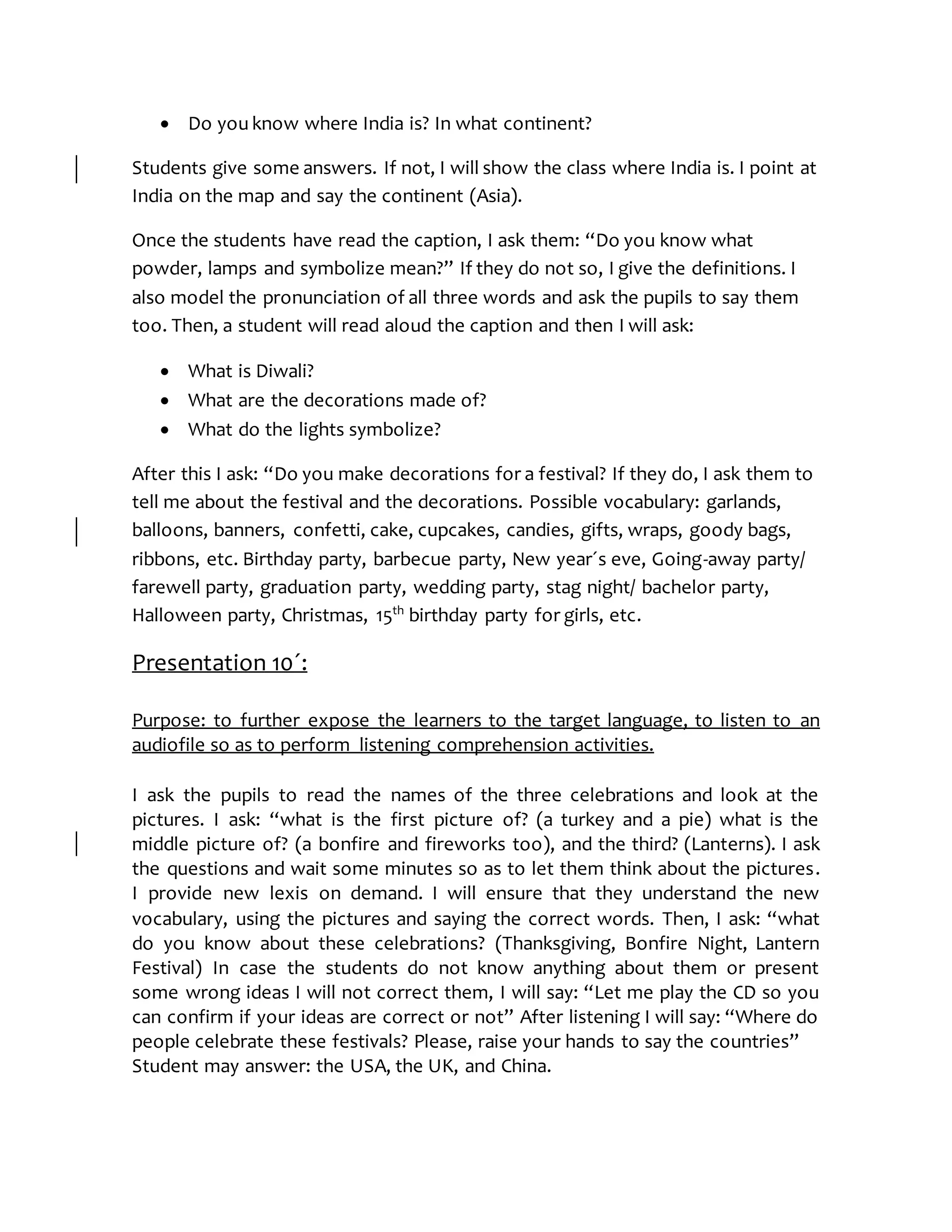This lesson plan is for an 80-minute primary school lesson about festivals for 11-year-old advanced students. The lesson plan includes objectives to develop vocabulary about festivals, describe festivals, and understand cultural issues. It involves warmup activities to introduce festival vocabulary and pictures. Students then listen to descriptions of Thanksgiving, Bonfire Night, and the Lantern Festival and complete a table. They read a dialogue using present perfect tense and identify grammar examples. Homework includes practicing irregular past participles.











